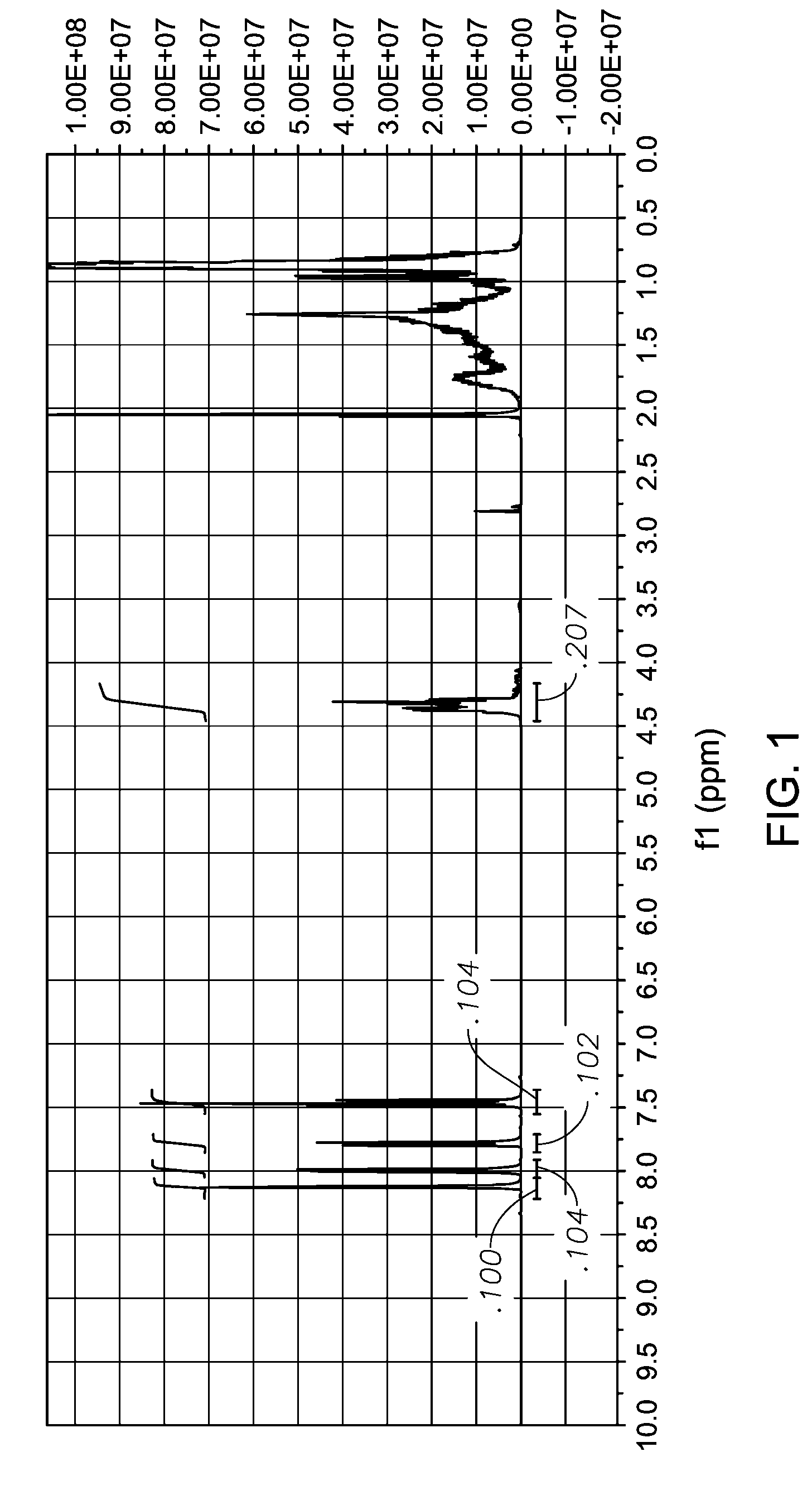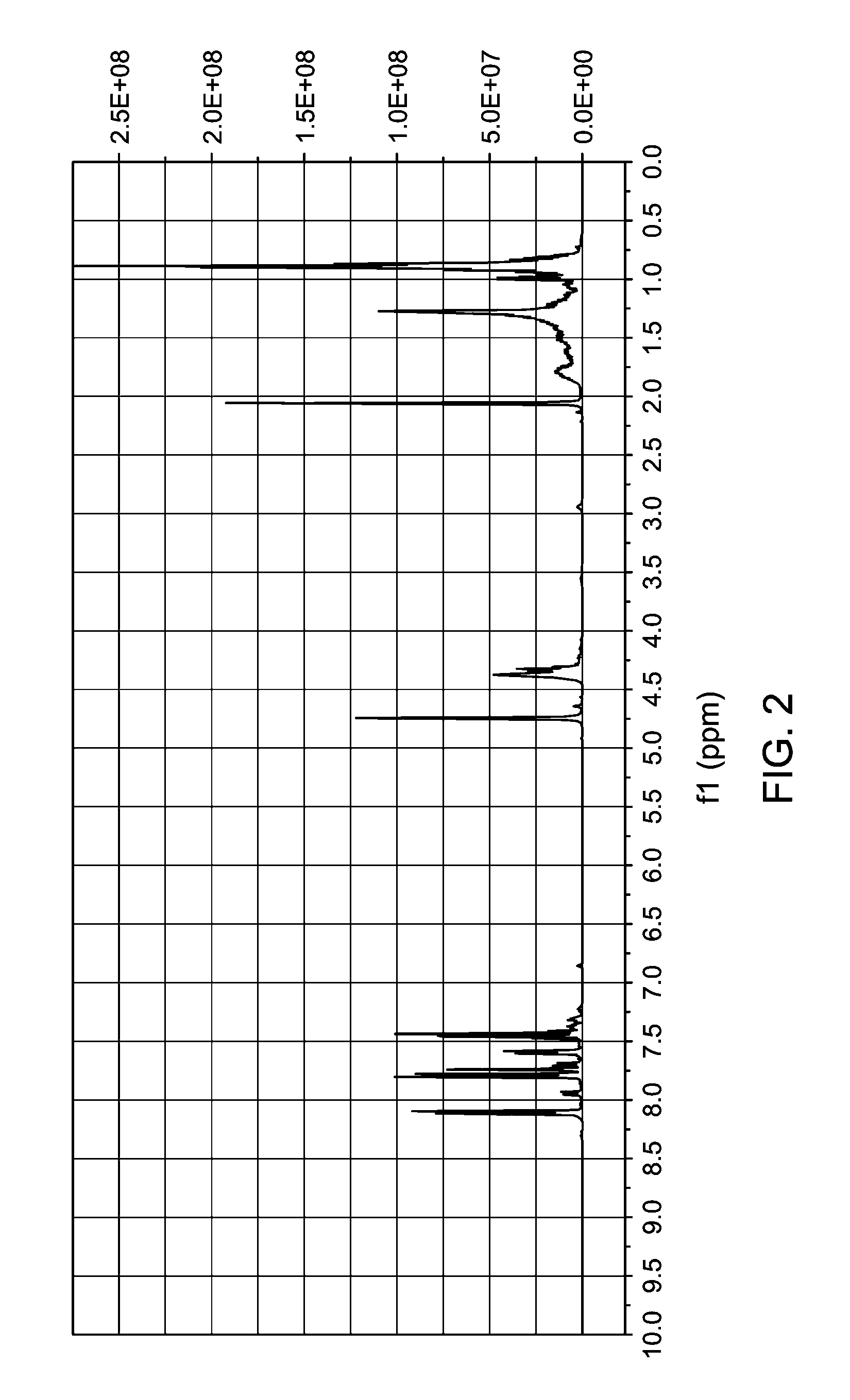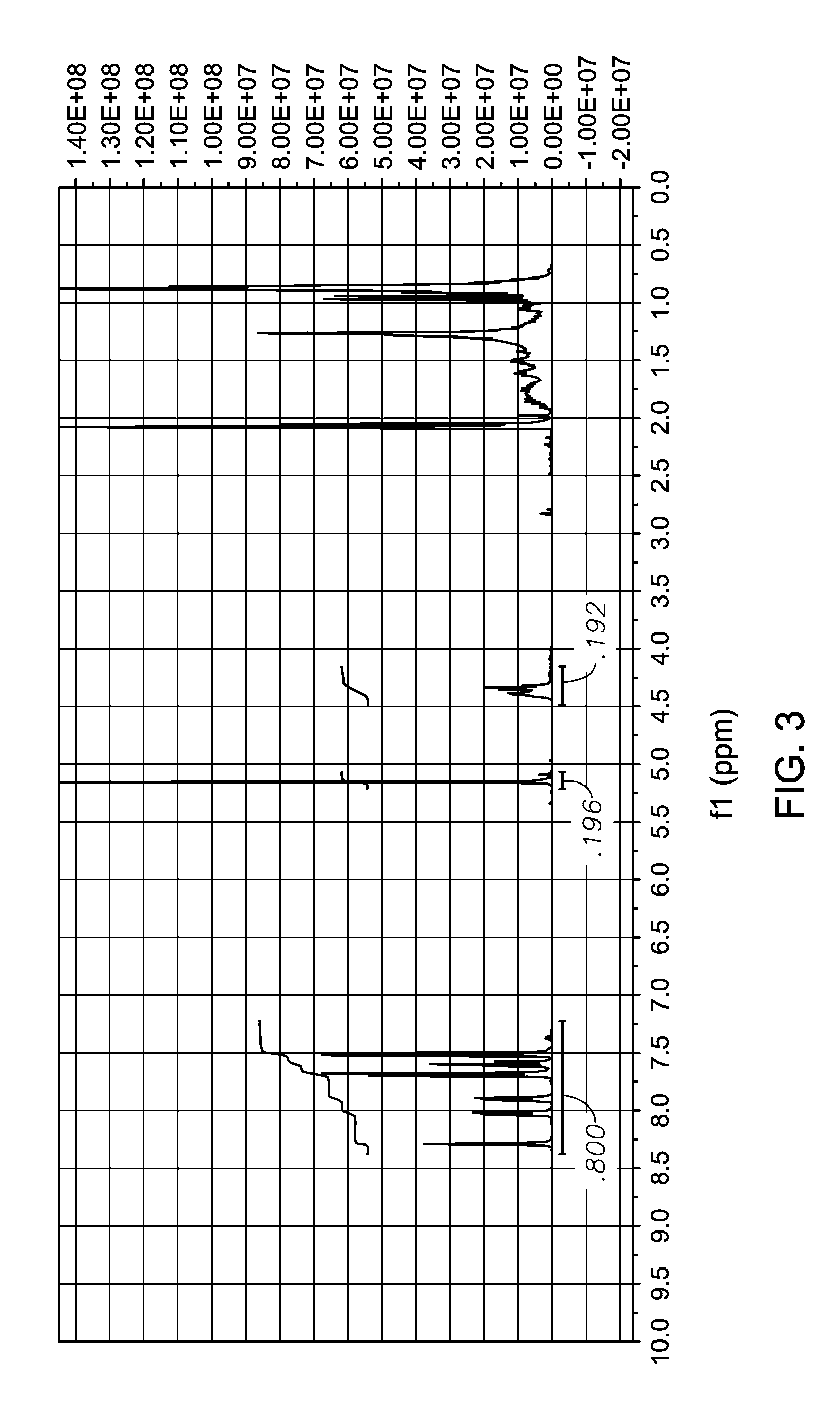Biphenyl Esters, Their Production and Their Use in the Manufacture of Plasticizers
a technology of biphenyl esters and plasticizers, applied in the preparation of carboxylic acid esters, chemical apparatus and processes, organic chemistry, etc., can solve the problems of reducing the processability of pvc products, reducing the performance or poor processability of existing plasticizer systems for pvc, and reducing the production efficiency of pvc products. , to achieve the effect of good processability, low volatility and attractive combination
- Summary
- Abstract
- Description
- Claims
- Application Information
AI Technical Summary
Benefits of technology
Problems solved by technology
Method used
Image
Examples
example 1
Synthesis of 4′-acetoxymethylbiphenyl-3-carboxylic acid, isononyl ester
[0057]In order to test its properties as a plasticizer, a sample of 4′-acetoxymethylbiphenyl-3-carboxylic acid, isononyl ester was produced from 3-bromobenzoic acid by the following laboratory synthesis method.
[0058](a) 3-Bromobenzoic acid (25 g, 0.124 mmol) and Exxal 9 isononyl alcohol (53.8 g, 0.372 mmol) were charged to a 250 ml round bottom flask and purged with N2 for 20 minutes. The mixture was heated to 185° C. and a tin(II) 2-ethylhexanoate (66.4 mg) catalyst was added to the mixture. Heating was continued until the reaction mixture reached 220° C. The mixture was maintained 220° C. for 2 hrs for the reaction to proceed. The reaction was then cooled and excess Exxal 9 alcohol was removed by vacuum distillation. 1H NMR of the product, 3-bromo-benzoic acid, isononyl ester (formula IV)
is shown in FIG. 1.
[0059](b) 3-Bromo-benzoic acid, isononyl ester (23 g, 70 mmol) from (a), 4-hydroxymethylphenylboronic acid...
example 2
TGA Testing of 4′-acetoxymethylbiphenyl-3-carboxylic acid, isononyl ester
[0061]The 4′-acetoxymethylbiphenyl-3-carboxylic acid, isononyl ester of Example 1 was blended with PVC and subjected to TGA volatility testing using a TA Instruments TGA5000 instrument calibrated to vendor specifications. Sample sizes of 10±1 mg were used. Samples were heated at 10° C. / min to 300° C. in nitrogen (25 cc N2 / min flow through furnace and 10 cc N2 / min flow through balance) and weight loss at 220° C. was used as the volatility metric. The results are shown in FIG. 4, which also shows the results obtained when the same test was conducted with certain known plasticizers, namely dioctyl terephthalate (DOTP), dioctyl phthalate (DOP), diisononyl phthalate (DINP) and 1,2-cyclohexane dicarboxylic acid diisononyl ester (DINCH). It will be seen that the diester of Example 1 had excellent TGA volatility as compared to the other plasticizers tested.
example 3
Flex Testing of 4′-acetoxymethylbiphenyl-3-carboxylic acid, isononyl ester
[0062]The 4′-acetoxymethylbiphenyl-3-carboxylic acid, isononyl ester of Example 1 was blended with PVC and was subjected to low temperature flexibility testing using a TA Instruments Q800 Dynamic Mechanical Analyzer (DMA) with a three-point bending clamp. Samples were cooled at 3° C. / min and data was collected upon heating at 3° C. / min using a frequency of 1 Hz, amplitude of 20 μm, 0.01 N preload force, and 120% force track. From the DMA measurements, flex onset was determined from the onset of the tan 6 peak.
[0063]The results are shown in FIG. 5, which also shows the results obtained when the same test was conducted with the known plasticizers DOTP, DOP, DINP and DINCH. It will be seen that the diester of Example 1 had adequate low temperature flexibility, although was somewhat worse than the other plasticizers tested.
PUM
| Property | Measurement | Unit |
|---|---|---|
| Temperature | aaaaa | aaaaa |
| Temperature | aaaaa | aaaaa |
| Temperature | aaaaa | aaaaa |
Abstract
Description
Claims
Application Information
 Login to View More
Login to View More - R&D
- Intellectual Property
- Life Sciences
- Materials
- Tech Scout
- Unparalleled Data Quality
- Higher Quality Content
- 60% Fewer Hallucinations
Browse by: Latest US Patents, China's latest patents, Technical Efficacy Thesaurus, Application Domain, Technology Topic, Popular Technical Reports.
© 2025 PatSnap. All rights reserved.Legal|Privacy policy|Modern Slavery Act Transparency Statement|Sitemap|About US| Contact US: help@patsnap.com



